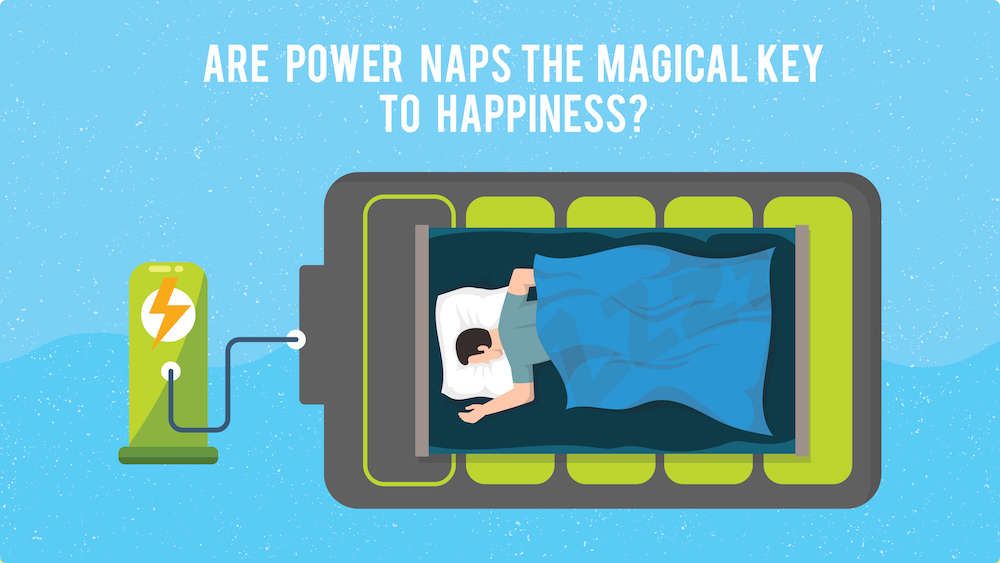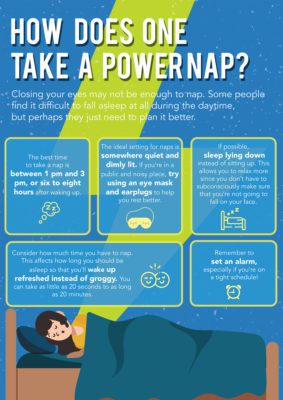Are Power Naps the Magical Key to Happiness?

Are you in the habit of catching forty winks? If so, you’re in good company. Taking a catnap for a few minutes in the afternoon is beneficial for everyone.
No need to sleep during naptime! Simply taking two to three hours in the afternoon to rest and relax can give you the boost you need to recharge your batteries and get back to work energized.
What exactly is a power nap?
A power nap refers to sleeping for a short amount of time, usually in the afternoon hours.
Afternoon naps are a bit of a debatable topic. There are those that consider it a lazy habit, while there are many that have adopted it into their cultures such as Spain, Italy, Greece, China, Taiwan, and the Philippines. The power nap comes highly recommended by sleep experts and has been tried and tested by the likes of Albert Einstein and Winston Churchill, as well as pilots, the US military, and NASA astronauts. You wouldn’t call them lazy, would you?
While closing your eyes for as little as five seconds can be restful enough, you can take naps of various lengths to be better rested. This works great for people on the go.
Take a nano nap of 10 to 20 seconds when you’re short on time. A micro nap of two to five minutes can shake off the drowsiness. A mini nap of five to 20 minutes helps improve alertness. A 20-minute power nap boosts muscle and long-term memory. Napping for 50 to 90 minutes enables you to complete a REM cycle, which is basically a completely rested sleep.
A helpful tip: whenever you feel the need to take a nap, do so. Perhaps you’re driving late at night or feeling drowsy for no reason, catch some Zs to make sure that you’re alert and awake. You can also plan ahead and schedule your nap, especially for those hectic days. Sooner or later, you might find that you’ve made a habit of napping at a certain time every day.
How does one take a power nap?

Closing your eyes may not be enough to nap. Some people find it difficult to fall asleep at all during the daytime, but perhaps they just need to plan it better.
The best time to take a nap is between 1 pm and 3 pm, or six to eight hours after waking up.
The ideal setting for naps is somewhere quiet and dimly lit. If you’re in a public and noisy place, try using an eye mask and earplugs to help you rest better.
If possible, sleep lying down instead of sitting up. This allows you to relax more since you don’t have to subconsciously make sure that you’re not going to fall on your face.
Consider how much time you have to nap. This affects how long you should be asleep so that you’ll wake up refreshed instead of groggy. You can take as little as 20 seconds to as long as 20 minutes.
Remember to set an alarm, especially if you’re on a tight schedule!
Is power napping the key to happiness?
Even some of the most accomplished people in history take precious time out of their busy days to nap and rest. One might even consider their nap times to be the secret to their success.
For instance, Margaret Thatcher would take short naps in her 20-hour workdays to make up for her sleepless nights. Thomas Edison would often nap for two to three hours per day. Salvador Dalí would hold a key between his thumb and forefinger and would wake up from his “micro nap” once it falls.
While power naps may not be the ultimate secret to being happy, it’s fair enough to say that it helps. Taking naps regularly reduces stress, increases patience, boosts creativity, and improves overall health.
If you find yourself nodding off in the middle of your workday, try snoozing for 10 to 15 minutes, and experience it for yourself.